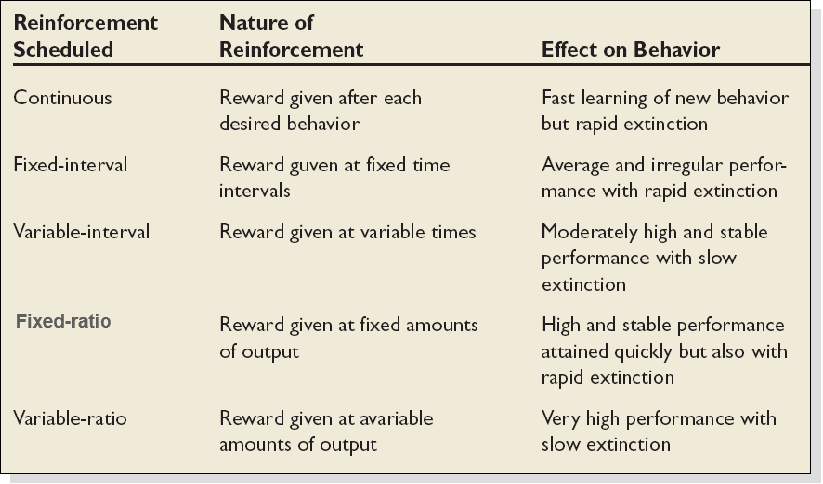Biographical Characteristics
Personal characteristics—such as age, gender, and marital status—that are objective and easily obtained from personnel records.
Ability, Intellect, and Intelligence
- Ability. An individual’s capacity to perform the various tasks in a job.
- Intellectual Ability. The capacity to do mental activities.
- Multiple Intelligences. Intelligence contains four subparts: cognitive, social, emotional, and cultural.
Dimensions of Intellectual Ability
- Number aptitude
- Verbal comprehension
- Perceptual speed
- Inductive reasoning
- Deductive reasoning
- Spatial visualization
- Memory
Physical Abilities
Physical Abilities
The capacity to do tasks demanding stamina, dexterity, strength, and similar characteristics.
Nine Physical Abilities
Strength Factors
1. Dynamic strength
2. Trunk strength
3. Static strength
4. Explosive strength
Flexibility Factors
5. Extent flexibility
6. Dynamic flexibility
Other Factors
7. Body coordination
8. Balance
9. Stamina
The Ability - Job fit
Employee's Abilities --> Abilty - Job Fit <-- Job's Ability Requirements
Learning
Any relatively permanent change in behavior that occurs as a result of experience.
Learning:
- Involves change
- Is relatively permanent
- Is acquired through experience
Classical Conditioning
A type of conditioning in which an individual responds to some stimulus that would not ordinarily produce such a response.
Key Concepts :
- Unconditioned stimulus
- Unconditioned response
- Conditioned stimulus
- Conditioned response
Operant Conditioning
A type of conditioning in which desired voluntary behavior leads to a reward or prevents a punishment.
Key Concepts :
- Reflexive (unlearned) behavior
- Conditioned (learned) behavior
- Reinforcement
Social-Learning Theory
People can learn through observation and direct experience.
Key Concepts
- Attentional processes
- Retention processes
- Motor reproduction processes
- Reinforcement processes
Shaping Behavior
Systematically reinforcing each successive step that moves an individual closer to the desired response.
Key Concepts
- Reinforcement is required to change behavior.
- Some rewards are more effective than others.
- The timing of reinforcement affects learning speed and permanence.
Types of Reinforcement
- Positive reinforcement
Providing a reward for a desired behavior.
- Negative reinforcement
Removing an unpleasant consequence when the desired behavior occurs.
- Punishment
Applying an undesirable condition to eliminate an undesirable behavior.
- Extinction
Withholding reinforcement of a behavior to cause its cessation.
Schedules of Reinforcement
- Continuous Reinforcement
A desired behavior is reinforced each time it is demonstrated.
- Intermittent Reinforcement
A desired behavior is reinforced often enough to make the behavior worth repeating but not every time it is demonstrated.
- Fixed-Interval Schedule
Rewards are spaced at uniform time intervals.
- Variable-Interval Schedule
Rewards are initiated after a fixed or constant number of responses.
Intermittent Schedules of Reinforcement
Behavior Modification
The application of reinforcement concepts to individuals in the work setting.
Five Step Problem-Solving Model
1. Identify critical behaviors
2. Develop baseline data
3. Identify behavioral consequences
4. Develop and apply intervention
5. Evaluate performance improvement
Application
- Well Pay versus Sick Pay
Reduces absenteeism by rewarding attendance, not absence.
- Employee Discipline
The use of punishment can be counter-productive.
- Developing Training Programs
OB MOD methods improve training effectiveness.
- Self-management
Reduces the need for external management control.
(Robbins, 2005)






No comments:
Post a Comment